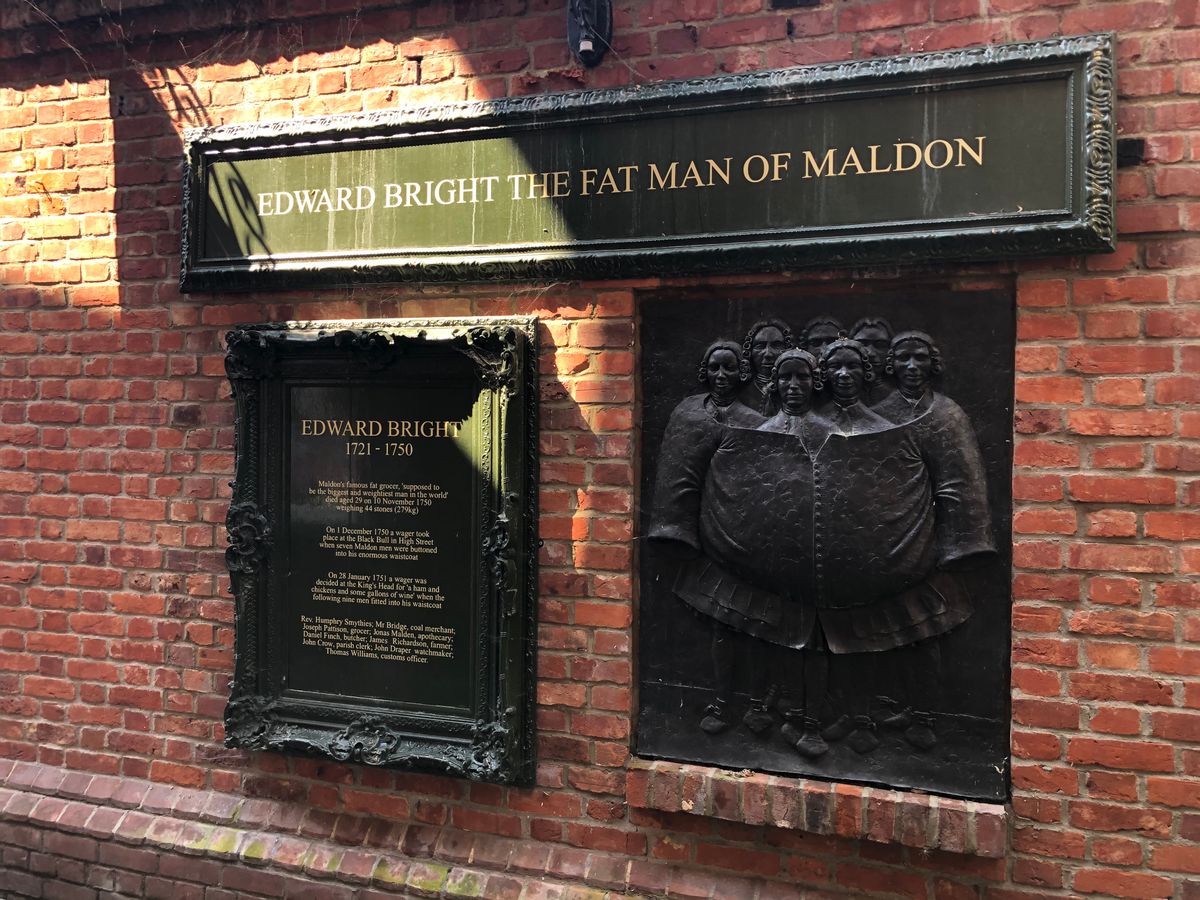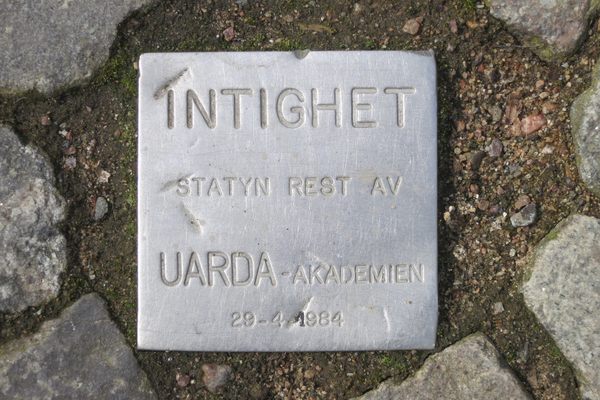About
Edward Bright was born in Maldon, Essex in 1721, where he remained throughout his life serving the town as a grocer and candle maker. He was considered an honest tradesman by his customers, genial by his friends, and popular amongst townspeople. But it wasn't Bright's kindly personality that distinguished him to those passing by his shop, but rather the fact that he was an extremely large man.
By the age of 20, Bright weighed 335 lbs (152 kilograms), eight years later, his weight had ballooned to nearly 600 lbs. With a waist as wide as most mens height during the time, Bright soon became known as the “The Fat Man of Maldon." At the time of his death in 1750, he was widely considered the largest man in England.
However, Bright is perhaps most remembered locally for being the subject of a rather unusual, or even impossible bet. One day, a local man heard that Bright's waistcoat had been sent to the tailors to be let out. He proceeded to bet a friend that seven hundred men could fit into the waistcoat. Unsurprisingly, the friend accepted the bet believing that such a claim was impossible regardless of Bright's size.
The skeptical friend was soon proven wrong with some trickery and wordplay of course. The local man buttoned seven men from Dengie Hundred, a local area of land, into the garment. This demonstrated that seven "Hundred" men could indeed fit inside.
A bronze relief illustrating this bizarre wager was installed a short distance from where Bright’s house and shop were located on Maldon High Street. The installation features seven male figures complete with period wigs, cravats, and shoes squeezed into the greatcoat. The relief is accompanied by a plaque briefly detailing Bright's life and the events of the bet.
Bright never took part in an exhibition or shows like many who later carried the title of "Largest Man in England." Bright gained his recognition and admiration from people as he walked along the streets. This was something Bright did often, as friends mentioned he was very strong and active. It's also said that he exercised frequently and didn't eat as much as many expected.
In the end, Bright died at only 29 years old from typhoid. After a coffin was specially designed for his unique figure, a wall and staircase within his home were removed to move him down into his shop. He was then taken to the church to be buried.
Related Tags
Know Before You Go
An accurate reproduction of Bright’s famous waistcoat is housed at Maldon Museum in Promenade Park, alongside a smaller version of the bronze relief.
A blue plaque awarded by the Maldon Society adorns Bright’s home and shop between 57 and 59 High Street (not to be confused with the blue plaque for his son, also Edward Bright, off of Bright's Path.)
Community Contributors
Added By
Published
September 4, 2020
Sources
- https://en.wikipedia.org/wiki/Edward_Bright
- https://www.itsaboutmaldon.co.uk/edwardbright/index.shtml
- https://www.allsaintsmaldon.com/about-us/anoverview9590.php
- Stern, C. (2000) EDWARD BRIGHT THE FAT MAN OF MALDON, High Street 38 (Kings Head Centre), Maldon. (Viewed: 10 August 2020)
- Dirks, W., 2019. 'Weighty Celebrity': Corpulency, Monstrosity, and Freakery in Eighteenth- and Nineteenth-Century England. Disability Studies Quarterly, [online] 39(3). Available at: <https://dsq-sds.org/article/view/6602/5410> [Accessed 27 April 2020].
- https://www.gazette-news.co.uk/news/5511348.maldon-bronze-of-fat-mans-coat/
- http://maldon-essex.weebly.com/the-fat-man-of-maldon.html
- http://www.bbc.co.uk/essex/content/articles/2008/05/15/fat_man_maldon_feature.shtml


































